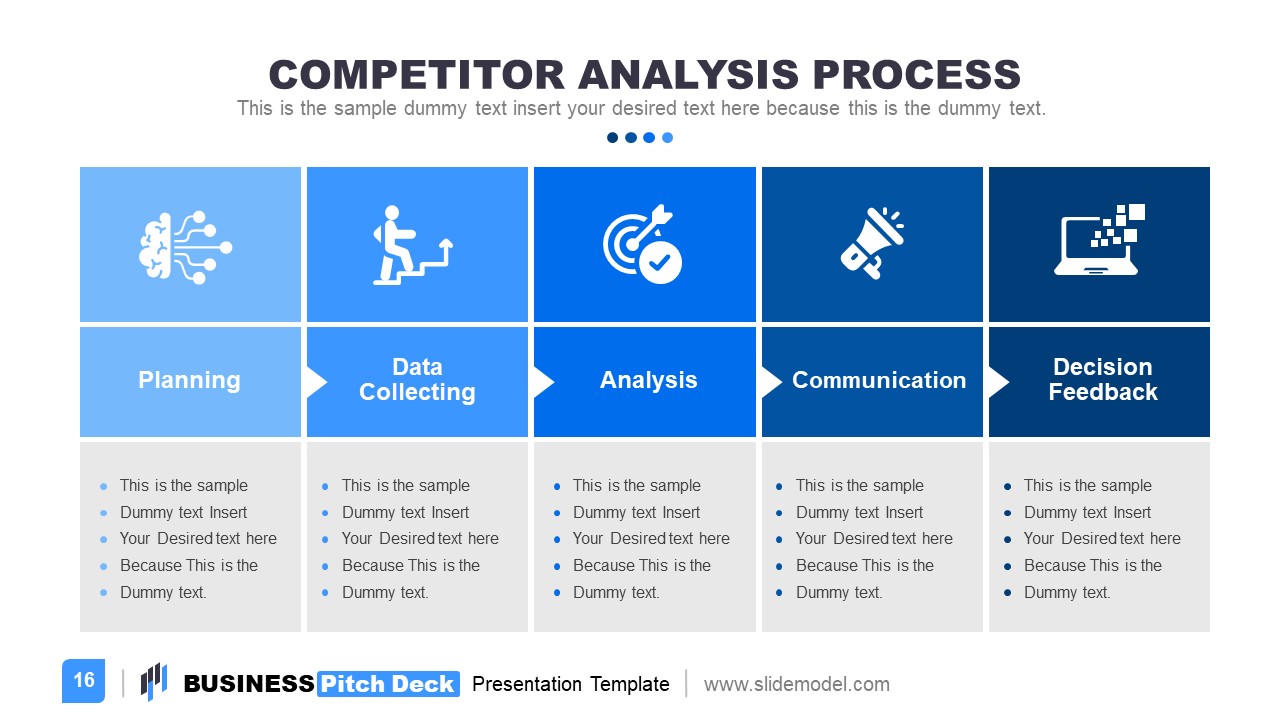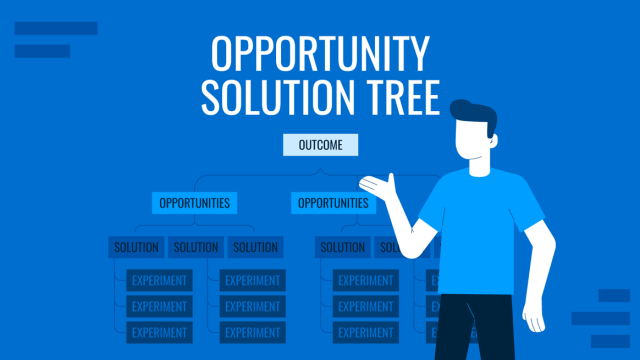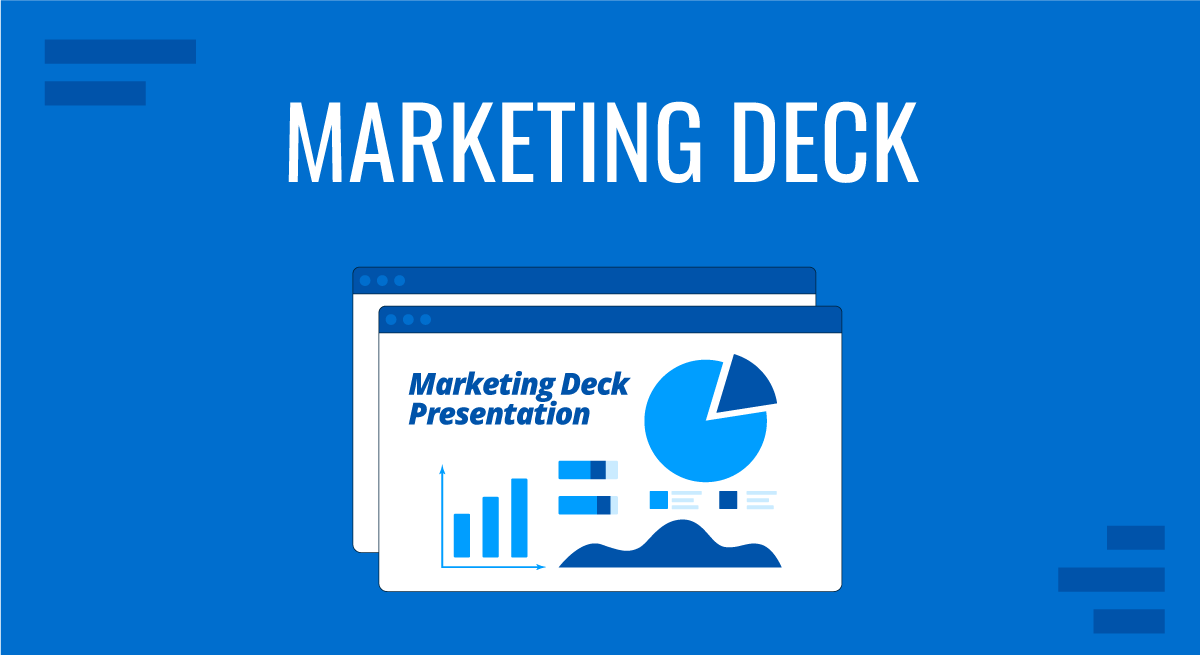
When selling a product or service, you cannot just sit around and hope for someone to pop up and buy from you. You must actively promote your business, build brand awareness, and connect with target audiences to get your product out there. In doing so, you need a marketing deck right beside you.
What is a marketing deck? Why do I need it? How do I create one? We will answer all your important questions regarding this document in this article. So, let’s dig into the matter!
Table of Contents
- What Is a Marketing Deck?
- Components of a Marketing Deck
- Tips When Creating a Marketing Deck
- Recommended Marketing Deck Templates
- Conclusion
What Is a Marketing Deck?
There are many ways to call a marketing deck – a marketing presentation, a pitch deck presentation, or a marketing campaign deck – but they all pertain to one type of document. Its job is to succinctly communicate the value of a product or service within the bounds of a specific market or industry. Business professionals use marketing decks to share their brand stories and persuade potential partners and customers to support them.
A marketing deck benefits businesses at any stage of their lifecycle, whether they are startups, established companies, or anywhere in between.
For startups, marketing decks are often used to secure initial funding. They provide a way to introduce the business concept, outline the value proposition, and demonstrate the growth potential to investors or venture capitalists.
Customer needs and wants change, and the pressure for companies to innovate is constant. Established companies can benefit from marketing decks when navigating these challenges, particularly when launching new products or services, rebranding, or repositioning in the market.
Components of a Marketing Deck
The length and number of slides to include in a marketing deck change according to the needs and goals of the organization. The target audience’s familiarity with the company, the complexity of the topic, and the time constraints in delivering the presentation will all influence the elements you can include in your template.
For starters, here are the components you commonly see in marketing decks.
- Company Overview
- The Problem
- The Solution
- Buyer Persona
- The Market Size
- Competitive Landscape
- Unique Value Proposition
- The Traction
- Marketing Strategy
- Social Proof
Let’s zero in our discussion on each component. We’ve created a fictional company, GoTaxi, to provide a clear picture of a good marketing deck.
1. Company Overview
An overview is an essential part of a marketing presentation that tells the unique story behind a company. It is normally identified as “Who We Are” but sometimes referred to as “Our Company Summary” slide or “About Us” slide.
When preparing this slide, you must remember where you want your organization to be (the vision), its purpose (the mission), what principles and values guide the company, and more. At first glance, this is a considerable amount of content to condense into a single slide. Hence, the focus should be on brevity.
Take a look at our sample company overview template.

2. The Problem
Prospects have different stages of awareness, as Eugene Schwartz elaborated in the book Breakthrough Advertising. Some potential customers know they have a problem. Some know there is a solution. Some may even know your product and are sure that it is the solution to their problem. However, some are not aware that they have a problem in the first place.
How is this relevant to the topic at hand? If someone is unaware of their problem, attempting to sell them a solution prematurely is likely ineffective or even off-putting. It’s crucial to build tension and awareness first.
The problem statement slide explains the pain points you are trying to address and why it’s important to address them. It can be presented in paragraph form or by telling a story. You may also highlight data and consequences to emphasize the urgency of solving the problem.
Here’s a sample problem statement slide from our Lean Investors Pitch Deck template.

3. The Solution
You have demonstrated that a problem exists. Follow it up immediately with the solution slide detailing what you offer. This helps your audience understand how your product or service addresses the identified problem and why it’s the right solution.
Start by explicitly connecting the problem you’ve highlighted with your product or service. You don’t have to discuss every aspect of your solution; focus on the key benefits and features that make your offering the right fit. You may even showcase them through visuals or product demonstrations to make your solution tangible and more understandable for your audience.
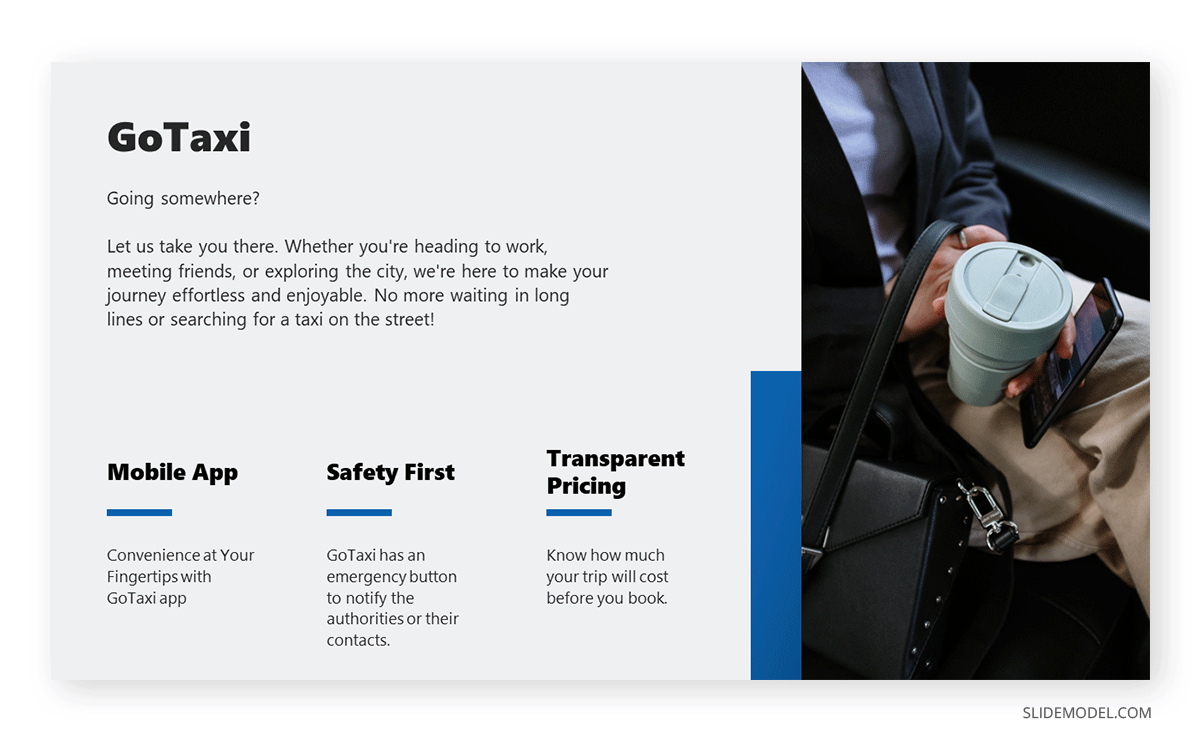
4. Buyer Persona
It’s important to include buyer personas in your marketing deck if you will present it to your internal marketing and sales team. Having buyer personas will help your team unify your marketing strategies with your target customers in mind.
In creating buyer personas, include the general demographic information (age, gender, marital status, education, etc.) representing a specific segment of your existing or prospective customers. You may add extra padding like their common interests, behaviors, pain points, fears, and values. All these elements have a bearing on people’s buying patterns, which you can leverage to target specific customer segments effectively.
These personas can be illustrated with fictitious names and images to make them more relatable, as shown in the example below.
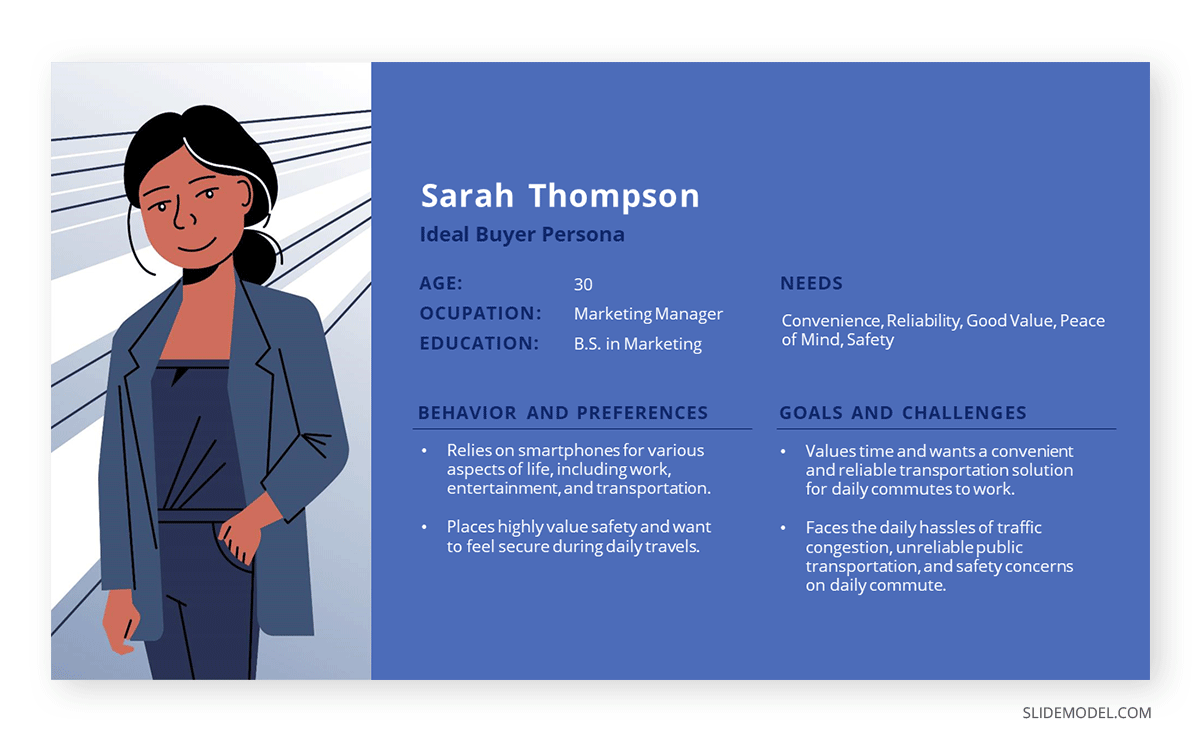
5. The Market Size
It’s not enough that you prove the existence of a particular problem. If you are trying to market a solution and gain support from potential partners, you have to prove that many people experience that problem. In other words, you have to specify the market size of the industry in which you operate. This is an important indicator of your business’s growth potential.
The straightforward way of market sizing is first to identify the total addressable market (TAM). From there, you can narrow it down according to demographics, location, income bracket, and other factors relevant to your business.

6. Competitive Analysis
Presenting a competitive analysis in your marketing deck shows how self-aware you are as a brand. It illustrates that you’re not operating in isolation but are actively monitoring your market.
The most popular way to visually present a competitive analysis is by using a perceptual map. This quadrant determines how consumers rate you and your competitors according to specific dimensions. It might reveal a not-so-good picture of your business, but it opens up an opportunity to outplay existing players.

7. Unique Value Proposition
After carefully studying your target customers and competitors, you must develop a unique value proposition or UVP. It is a statement that explicitly says that you have the upper hand. It highlights the benefits of your product, its difference from the rest, and why customers should do business with you rather than with your competitors.
Presenting your unique value proposition doesn’t follow a one-size-fits-all approach. It can comprise just a few lines. You may also present it using a block of text with a headline, an explanation of what you do/offer and who it’s for, and the positive outcomes or value customers can expect.
8. The Traction
Traction in business means the measurable evidence of a company indicating its growth tendencies. Investors use this to determine that there is more behind a company than just a good idea.
In this slide, show what your business has accomplished. Past financial records can be a part of this like:
- Your revenue for a couple of years
- Number of sales made
- The capital you’ve raised from investors
That said, it’s not limited to money matters alone. Positive media coverage, online traffic, social media reports, and follower count, for example, are good metrics for traction.

9. Marketing Strategy
When presenting your marketing deck, investors may ask, “How do you plan to market your solution?” Most of the time, they are not just interested in how you will get your campaign out there or what channel you will use to reach your customers. Compared to a marketing plan, a marketing strategy is an overarching roadmap for achieving a company’s goals.
The process includes defining your ideal customer personas, articulating the unique value of your product, determining how you want your brand to be perceived in the market, and conducting research to understand the market. You may focus on the 7Ps of marketing as you develop your marketing strategy.
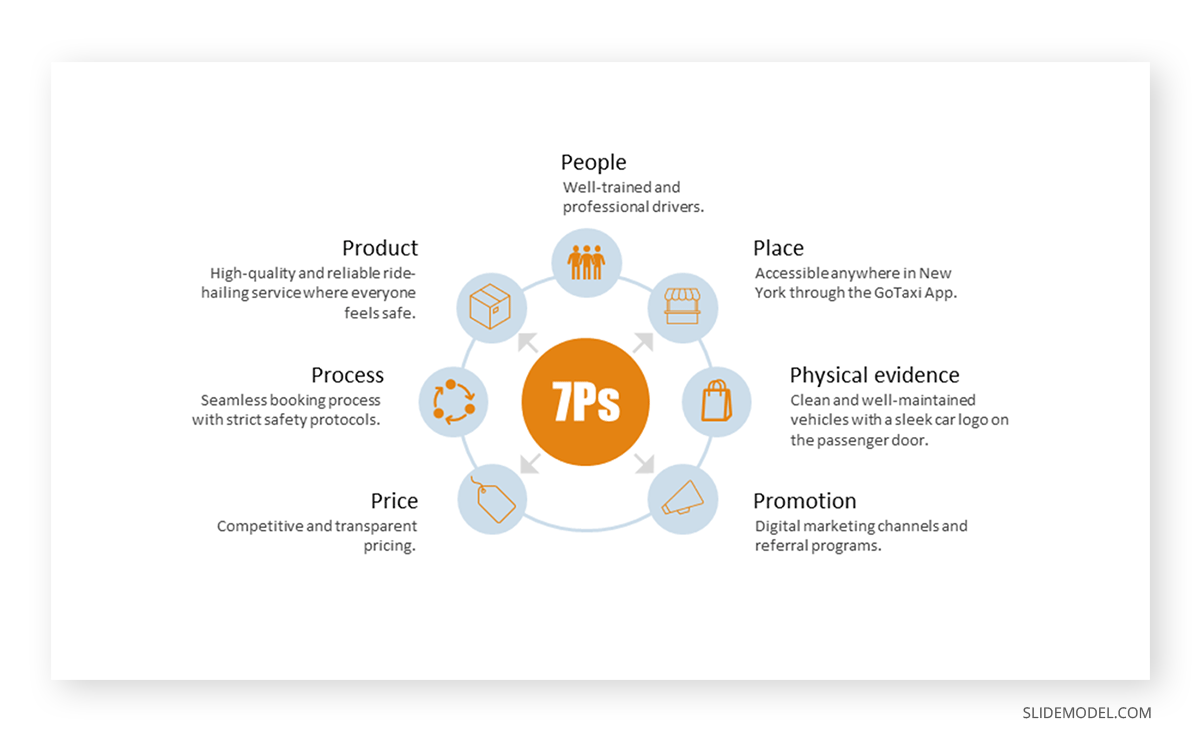
10. Social Proof
People are generally more receptive to social proof than traditional, overt advertising or self-promotion. This isn’t just an opinion; it’s a well-established understanding in the marketing field, as proven by Robert Cialdini, who coined the term “social proof” in 1984.
Social proof is a psychological phenomenon where people look to the behavior and opinions of others to guide their own decisions and actions. When they see evidence that others have had positive experiences with a product or service, it naturally carries more influence than the company’s claim.
Social proofs can come in different forms: testimonials, endorsements, media coverage, certifications, and awards. Mix these elements into your marketing plan deck to make it more authentic and persuasive.
Tips When Creating a Marketing Deck
1. Get to know your audience
A marketing deck intended for an investor presentation won’t be as effective when presented to customers, and vice versa. The two audiences have different needs and interests, so you must tailor your presentation accordingly.
Investors are primarily interested in the internal operations of your business, such as how you make money and how much, your market potential, and your overall traction. On the other hand, customers are interested in the features of your product or service, your UVP, and how you can address their pain points.
Knowing who your audiences are will allow you to select the slides you need for your marketing strategy deck.
2. Highlight the problem and rub it in
To “rub it in” means to make the problem vivid, relatable, and compelling for your audience. By clearly articulating the problem, you can create a compelling and urgent context for your solution.
You may share stories or case studies demonstrating how the problem has negatively impacted others. Then, follow it up with a positive, feasible solution to avoid leaving your audience feeling hopeless.
3. Focus on important data
In marketing, you assert that your product or service is the best solution and a worthy investment for investors and customers. However, to put teeth into your bold claims, you have to back them up with proven data.
For example, if you are a software company claiming to boost employee productivity, present data that quantifies the actual increase in productivity it has achieved. You may also share testimonials or any other relevant information demonstrating your solution’s superiority.
4. Be concise
This is a common tip when preparing any type of presentation, whether a business pitch, a sales presentation, or a research report – and we cannot overstate its importance. Investors and customers are busy people, so you don’t want to waste their time on an unnecessarily lengthy presentation.
Be logical with the flow of your slides. In the case of a marketing deck, the problem statement and solutions will normally take the lead, followed by the justifications. You may also eliminate slides that don’t matter to your audience, like the “buyer persona slide” when presenting to customers. Buyer personas may be helpful to your internal marketing team but not your customers.
5. Stick to your brand palette
Brand color, logo, or even fonts interestingly relate to persuasion and marketing. Customers associate them with your brand, making it easier for them to recognize and remember you.
Just take Coca-Cola as an example. Their brand is strongly associated with the color red. Their logo, packaging, and marketing materials feature the iconic red color.
Hence, when designing your marketing deck, you should consider your brand identity, too.
Recommended Marketing Deck Templates
Conclusion
There’s no such thing as a universal marketing deck presentation, but we have one piece of advice that will surely work for every organization. Approach each marketing deck as a unique project. Customizing your marketing deck ensures that it speaks directly to the needs, aspirations, and expectations of the people you’re addressing.
You’ve taken from this article some practical tips and examples you can use as inspiration when creating your presentation. Practice them and share them with others!


